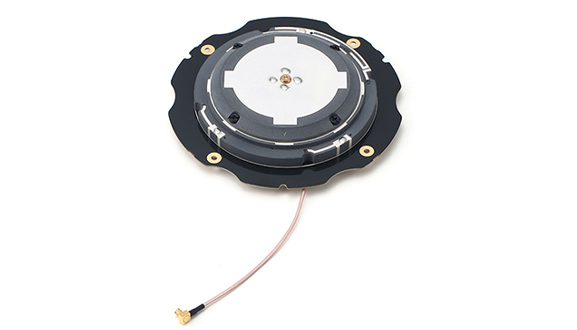GNSS stands for Global Navigation Satellite System, which refers to all satellite navigation systems, including global, regional, and enhanced systems. These systems include the United States' GPS, Russia's Glonass, Europe's Galileo, China's BeiDou Satellite Navigation System, and related augmentation systems such as the United States' WAAS, Europe's EGNOS, and Japan's MSAS.
After the GNSS antenna captures the satellite signal, it is first removed from unwanted noise and then amplified to a signal level that the receiver can handle. The receiver uses the timing data from these signals to calculate the distance to each satellite. By combining data from at least four satellites, the receiver can determine the user's precise location using a method called trilateration.
Types of GNSS Antennas There are two main types of antennas: active and passive.
Active GNSS antennas are equipped with an integrated low-noise amplifier (LNA) to amplify weak satellite signals before they reach the receiver. This amplification is critical in environments where satellite signals may be weak or obstructed, such as in urban canyons, inside vehicles, or in high-precision applications such as surveying. By improving signal quality, active antennas increase reliability and accuracy, making them suitable for applications that require robust performance under challenging conditions. These antennas can also compensate for signal losses due to long cable runs, ensuring that the receiver receives a strong and clear signal. As a result, active GNSS antennas are often used in fixed installations, high-precision applications, and scenarios where environmental factors may interfere with satellite signals.
Passive GNSS Antennas
In contrast, passive GNSS antennas do not include any amplification; they transmit satellite signals directly to the receiver. This design relies on the receiver's inherent processing capabilities to process the incoming signal. Passive antennas are best used in environments where satellite reception is strong, such as open fields or rural areas where interference is minimal. Their simplicity and lack of electronic components help achieve a lightweight and compact form factor, making them ideal for handheld devices and applications where low power consumption is a priority. While passive GNSS antennas can sometimes be paired with external low-noise amplifiers to boost signals when needed, they generally perform best when satellite signals are strong and stable, allowing for efficient operation without the added complexity of active components.
Key features of GNSS antennas and their impact on performance
Several key features of GNSS antennas significantly affect their functionality and overall performance.

Frequency coverage: GNSS antennas need to cover the frequency ranges of multiple satellite navigation systems, such as GPS's L1, L2, and L5 bands, GLONASS's L1 and L2 bands, and the corresponding bands of systems such as Beidou and Galileo. These bands cover 1559~1606 MHz (L1 band) and 1166~1187 MHz (L5 band). The coverage of operating frequencies directly affects the antenna's ability to receive signals.
Gain: The gain of a GNSS antenna indicates its ability to boost signals in a specific direction. The higher the gain, the stronger the antenna's signal reception capability, which can improve positioning accuracy and stability. For example, some GNSS antennas can have a gain of up to 5dBi.
Circular Polarization: GNSS antennas must have circular polarization capabilities. Antennas that use circular polarization can receive signals from satellites regardless of their orientation. This feature helps improve signal integrity and reduce the effects of multipath interference, which is critical in urban and dense environments.
Multipath Mitigation: This property involves techniques that minimize the effects of reflected signals that can distort the received signal. Effective multipath mitigation is critical to improving accuracy and reliability, especially in complex environments.
Axis Ratio: The axial ratio is a measure of the circular polarization performance of an antenna, which describes the antenna's ability to receive signals in different directions. The lower the axial ratio, the better the circular polarization performance of the antenna, and the stronger the suppression of cross-polarized signals, providing higher accuracy.
Impact on Receiver Sensitivity: The design and characteristics of the antenna directly affect the sensitivity of the GNSS receiver. Antennas with high gain and low noise characteristics improve the sensitivity of the receiver, resulting in better performance in challenging conditions.
Interference Handling: The ability of the antenna to manage and mitigate interference from other electronic devices is critical to maintaining signal quality. Strong interference handling capabilities ensure that GNSS systems can operate reliably in a variety of environments.
Understanding these characteristics is critical to selecting the right GNSS antenna for a specific application, ensuring optimal performance and accuracy. GNSS plays a key role in modern positioning and navigation systems, impacting a wide range of applications from precision agriculture to autonomous vehicles.

Comments
0